“It’s great to come back to this place and feel the joy,” Brendan Gleeson tells me at the Excelsior Hotel on Venice’s Lido. “It can’t be sunk. It just can’t.”
Gleeson is talking about an ancient city that, more than 200 years ago, Byron thought imminently doomed, but he could be talking about the famous Venice Film Festival. Gleeson is about to join Colin Farrell on the red carpet for Martin McDonagh’s ultimately well-received The Banshees of Inisherin. Elsewhere, the festival delivered early favourites in the race for the lead acting Oscars. At least one brewing controversy bubbled on to no clear conclusion. Standing ovation discourse reached idiotic proportions. Ah, cinema!
The long thin Lido, a short Vaporetto hop to the east of the old city, was abuzz with dispute, but there was little doubt about the sensation of the first week. The Irish Times was lucky enough to see Cate Blanchett take her (six-minute, according to Variety) standing ovation at the red-carpet screening for Todd Field’s vertebra-rattling TÁR. Wearing a black velvet corset by Schiaparelli – decorated with a whole hothouse of flowers – the Australian actor had the look of someone who couldn’t believe such a wild gamble had paid off.
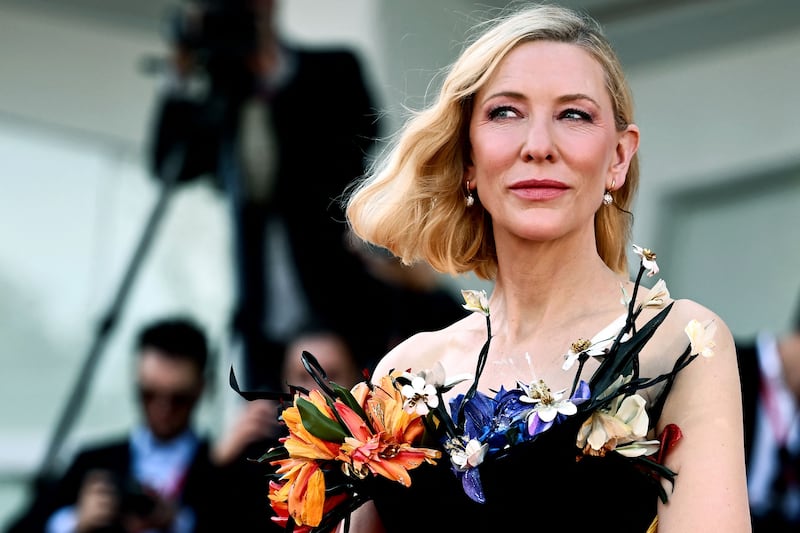
Following up his In The Bedroom and Little Children after a 16-year gap, Field studies a wildly celebrated conductor, now running a Berlin orchestra, as she finds elements of her sordid past poking holes in an apparently perfect life. Beginning with what looks like a kowtow to the eponymous protagonist, the film ultimately invites Lydia Tár to publicly self-disembowel. Some controversy may gather around its daring engagement with cancel culture, but few will resist Blanchett’s bravura, occasionally monstrous performance. The focus on Mahler’s Fifth Symphony generated appropriate reminders of Death in Venice. The ending is for the ages. Within hours, the bookmakers had pulled Blanchett into front-runner for the best actress Oscar at 10/3. Should she win, she would become one of only four women to secure three acting awards. Katharine Hepburn, with a record four wins, would then be within reach.
READ MORE
Festivals are also all about gossip, and the street (canal?) corners were, this year, awash with chatter about Olivia Wilde’s Don’t Worry Darling. Was Shia LaBeouf sacked or did he quit? Did female lead Florence Pugh fall out with Wilde? Did the director’s romantic relationship with male lead Harry Styles foster the discord that may or may not be happening? The weird behind-the-hand chatter culminated during a press conference at which Pugh was conspicuously absent.
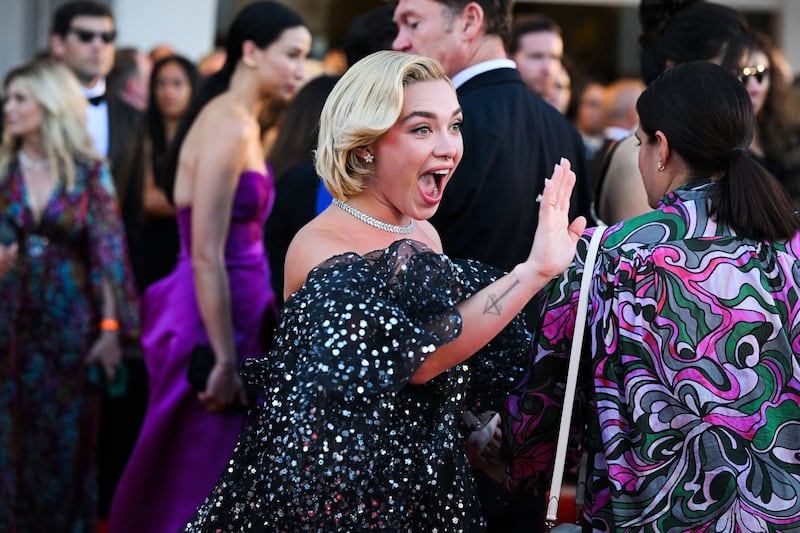
“Florence is a force. We are so grateful she’s able to make it tonight despite being in production on Dune,” Wilde said of the upcoming red-carpet premiere. The moderator then refused to allow a question about LaBeouf. Five minutes after Wilde discussed Pugh’s non-appearance, that actor was, The New York Times reported, “photographed sauntering down a deck in Venice, dressed to the nines in purple Valentino”. It is hardly worth mentioning – but we do so anyway – the contemporary Abraham Zapruder who claimed they had caught footage of Styles accidentally gobbing in Chris Pine’s lap during the (four-minute, it says here) standing ovation. Lest any lawyers are reading, we clarify this almost certainly did not happen.
[ What’s going on between Olivia Wilde, Harry Styles and Florence Pugh?Opens in new window ]
So, other than that, how was the play, Mrs Lincoln? After all the fuss, Move Over Darling turned out to be a bit of a dud. Pugh (excellent as always) and Styles (tolerable) play a perfect couple living by a perfect lawn in a perfect corner of perfect 1950s United States. It transpires there are no dark secrets and everyone is exactly what they seem. I’m joking of course. Lurching towards a lumbering twist that owes debts to at least three science-fiction classics, Don’t Worry Darling – lustrously shot and gorgeously dressed – plays like a mediocre episode of the Twilight Zone stretched so thin you can see daylight through its tendrils. For fans of classic cars only.
Never mind the gabbing. What quality titles did Venice launch upon the world? Domestic moviegoers will – though McDonagh has detractors in the old country – be mostly pleased to hear that The Banshees of Inisherin constitutes a return to the earthy rural beats of his early theatre work. Farrell and Gleeson play old chums on a western isle who fall out for no good reason while the Civil War rumbles on the mainland. That metaphor is a tad overcooked, but the borderline absurdist comedy between the two leads is beautifully worked throughout. Kerry Condon and Barry Keoghan offer strong support. Ben Davis’s cinematography makes something sinister of the John-Hinde-postcard aesthetic. Did you ask about the standing ovation? It seems that Banshees, at a palm-reddening 13 minutes, had the longest clapathon of the week and that it ultimately spread to those lurking outside the Salle Grande. It is now time to stop talking about this.
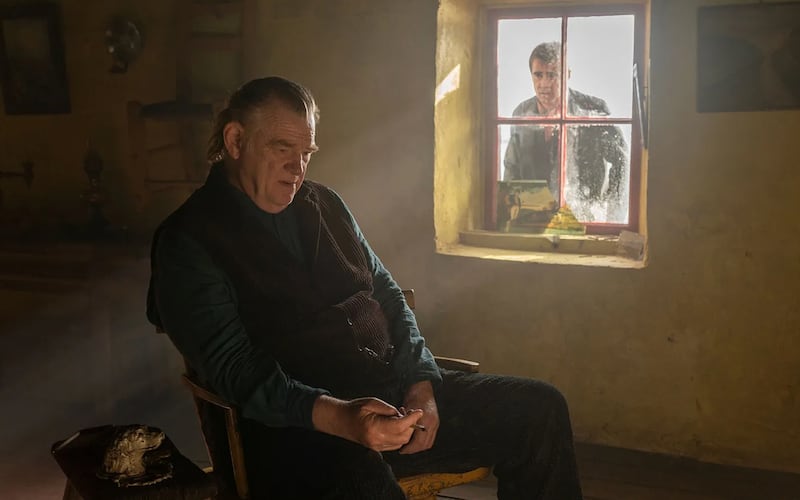
Dublin’s Element Pictures was back in competition with an eerie, witty chamber piece from Joanna Hogg. The Eternal Daughter stars Tilda Swinton, a collaborator of the director for more than 35 years, as both mother and daughter visiting a gloomy Welsh hotel that, in an earlier incarnation as a private home, held conflicting memories for the older woman. Shot on the quiet while Hogg’s acclaimed The Souvenir Part II was in post-production, the film explicitly references Rudyard Kipling’s classic ghost story They, but viewers will also think of the many MR James tales in which a crusty academic encounters weirdness while holidaying in damp bits of Britain. When future histories are written of pandemic-era cinema, this moving, odd film deserves to serve as an example of the best way to handle those restrictions. Hogg nods at the ghostly conventions – fog, moon, lurking rooftop statuary – while subtly teasing out the protagonist’s not fully processed personal traumas. A low-key gem featuring one of cinema’s great dogs.
[ The Souvenir Part II: There is nothing else quite like this in cinemaOpens in new window ]
One of the best documentaries at Venice ventured out under the unambiguous title The Ghost of Richard Harris. Interjecting conversations between the actor’s sons, Adrian Sibley’s picture cannot be faulted for its comprehensiveness. Here is Vanessa Redgrave (he was “adorable” apparently). Here is Jimmy Webb, composer of his big hit MacArthur Park, telling us how they fell out over a Rolls-Royce. Lelia Doolan, veteran Irish producer, talks about spotting him as an unknown and we then flashback many decades to find Leila and Richard chatting at a stage door. The young Harris confirms the contemporary Doolan’s recollections. The film is full of debauchery, but never backs away from the often sad realities.

Paul Schrader has fallen into an admirable late high period over the last decade. Starring Joel Edgerton as the eponymous horticulturalist – a former white supremacist tending grand dame Sigourney Weaver’s roses – Master Gardener looks to be completing a trilogy begun by First Reformed and continued by The Card Counter. Edgerton and Weaver are both excellent, but particular praise must go to the nonbinary actor Quintessa Swindel. Already shown to advantage in the TV series Euphoria, they are charming and persuasive as Weaver’s errant great-niece, gaining redemption among the mulch. Spooky. Hypnotic. Morally knotted.
There was cacophonous yelling at the red carpet for the arrival of Timothée Chalamet, resplendent in backless Haider Ackermann top, at the world premiere of Luca Guadagnino’s persuasive Bones & All. Based on a novel by Camille DeAngelis, the film treads a line between cute YA tropes – supposed individualists finding themselves part of a secret cadre – and something considerably more unsettling. At least one attendee at my screening seemed audibly distressed as the teen drama tipped over into cannibalism. Chalamet is strong, but the film belongs to the excellent Taylor Russell as a young woman still processing her desire to feast on flesh. The Italian director takes risks with troubling material and delivers rich dividends.
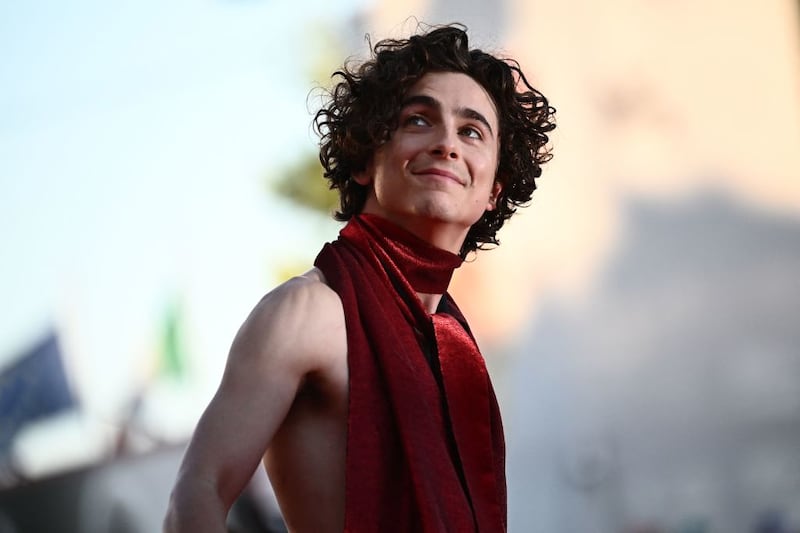
Two films marked down as players in the coming awards season spluttered on arrival. Brendan Fraser, not as busy as he deserved in recent years, received a justified warm reception for his role as a 42-stone depressive in Darren Aronofsky’s The Whale (though the cheers for Stranger Things alumna Sadie Sink, his co-star, on the red carpet were at least as loud). Buried beneath layers of padding, Fraser manages to convey enormous sensitivity and tortured regret. He will get an Oscar nomination and could well win. Unfortunately, the script, from a play by Samuel D Hunter, is contrived, sentimental and bathetic.
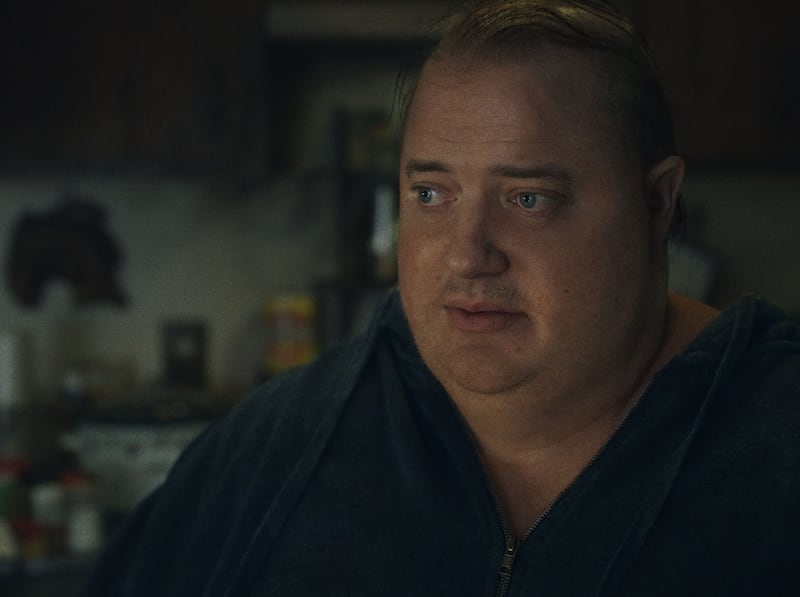
That film did at least have a charming central performance – and a real-life comeback story – to recommend it. In contrast, Alejandro González Iñárritu’s Bardo (or False Chronicle of a Handful of Truths) was as consistently irritating as its pretentious alternative title. Daniel Giménez Cacho’s plays a Mexican documentarist reflecting on life as he prepares to accept an award from a US body. He remembers a lady with (literally) fried eggs for breasts. He shrinks to the size of a child. At one point a colleague notes that the hero’s most recent work – called, yes, “False Chronicle of a Handful of Truths” – caused him to “crack up” when not triggering fear of death by boredom. To be fair Iñárritu is showing some self-awareness here, but that does not make this three-hour variation on Federico Fellini’s 8 ½ any less risible or any less boring. Less otto e mezzo than uno e mezzo (out of dieci).
There was more. Frederick Wiseman, one of the greatest documentary filmmakers, turned to drama with an austere, terse study of Sophia Tolstoy entitled A Couple. Penélope Cruz was utterly at home in Emanuele Crialese’s L’Immensita, an accomplished effort in the “my lovely batty mam” school of memory play. Laura Poitras’s All the Beauty and the Bloodshed, a doc on photographer Nan Goldin, gripped throughout. Abel Ferrara directed the aforementioned Shia LaBeouf as the title saint in the flawed, but fascinating, Padre Pio – a film that had as much to do with interwar Italian politics as the Catholic Church.
[ Oscars 2023: My predictions for next year’s best-picture nomineesOpens in new window ]
And there’s more to come. TÁR looks to have one hand on the Golden Lion, top prize here, but Florian Zeller’s The Son and Andrew Dominik’s Blonde are lurking just over the horizon. Cinema is still spoiling us.






















